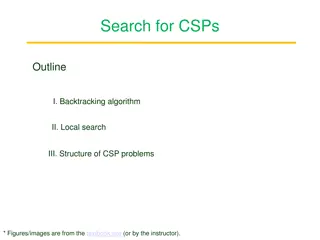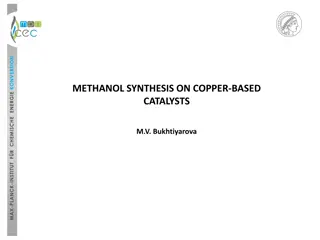Heuristics for Process Synthesis
This lecture explains heuristic rules that expedite the selection and positioning of processing operations in assembling flowsheets for process synthesis. The importance of selecting non-toxic reaction paths, distributing chemicals effectively, and applying heuristics in separation processes is highlighted. Examples and alternatives are provided to illustrate the application of heuristics in optimizing processes.
Download Presentation

Please find below an Image/Link to download the presentation.
The content on the website is provided AS IS for your information and personal use only. It may not be sold, licensed, or shared on other websites without obtaining consent from the author. Download presentation by click this link. If you encounter any issues during the download, it is possible that the publisher has removed the file from their server.
E N D
Presentation Transcript
HEURISTICS FOR PROCESS SYNTHESIS Ref: Seider, Seader and Lewin (2004), Chapter 5 1 Heuristics
Introduction Recalling the process operations in process synthesis: Chemical reaction (to eliminate differences in molecular type) Mixing and recycle (to distribute the chemicals) Separation (to eliminate differences in composition) Temperature, pressure and phase change Task integration (to combine tasks into unit operations) This lecture deals with the heuristic rules that expedite the selection and positioning of processing operations as flowsheets are assembled. These rules are based on experience and hold in general, but should be tested (e.g., by simulation) to ensure that they apply in the specific application. Later, in Section B, we will see how algorithmic methods are used to improve on design decisions. 2 Heuristics
Instructional Objectives When you have finished studying this unit, you should: Understand the importance of selecting reaction paths that do not involve toxic or hazardous chemicals, and when unavoidable, to reduce their presence by shortening residence times in the process units and avoiding their storage in large quantities. Be able to distribute the chemicals in a process flowsheet, to account for the presence of inert species, to purge species that would otherwise build up to unacceptable concentrations, to achieve a high selectivity to the desired products. Be able to apply heuristics in selecting separation processes to separate liquids, vapors, and vapor-liquid mixtures. Be able to distribute the chemicals, by using excess reactants, inert diluents, and cold shots, to remove the exothermic heats of reaction. Understand the advantages of pumping a liquid rather than compressing a vapor. 3 Heuristics
Raw Materials and Chemical Reactions Heuristic 1: Select raw materials and chemical reactions to avoid, or reduce, the handling and storage of hazardous and toxic chemicals. Manufacture of Ethylene Glycol (EG). O Example: 1-2 (R.1) C2H4 + O2 CH2 - CH2 O OH OH (R.2) CH2 - CH2 + H2O CH2 - CH2 Since both reactions are highly exothermic, they need to be controlled carefully. But a water spill into an ethylene-oxide storage tank could lead to an accident similar to the Bhopal incident. Often such processes are designed with two reaction steps, with storage of the intermediate, to enable continuous production, even when maintenance problems shut down the first reaction operation. 4 Heuristics
Alternatives to the two-step EG process Eliminate the storage tanks(s). 1) 2) Use chlorine and caustic in a single reaction step, to avoid the intermediate: OHOH CH2=CH2 + Cl2 + 2NaOH(aq) CH2CH2 + 2NaCl (R.3) 3) As ethylene-oxide is formed, react it with carbon dioxide to form ethylene-carbonate, a much less active intermediate that can be stored safely and hydrolyzed, to form the ethylene-glycol product, as needed: O O C (R.4) CH2 - CH2 + CO2 O O CH2 CH2 5 Heuristics
Distribution of Chemicals Heuristic 2: Use an excess of one chemical reactant in a reaction operation to completely consume a valuable, toxic, or hazardous chemical reactant (based on MSDSs). Example: Consider using excess ethylene in DCE production 6 Heuristics
Distribution of Chemicals (Contd) Heuristic 3: When nearly pure products are required, eliminate inert species before the reaction operations, when the separations are easily accomplished, and when the catalyst is adversely affected by the inert Do not do this when a large exothermic heat of reaction must be removed. Example: 7 Heuristics
Distribution of Chemicals (Contd) Need to decide whether to remove inerts before reaction... or after reaction... Clearly, the ease and cost of the separations must be assessed. This can be accomplished by examining the physical properties upon which the separations are based, and implies the use of simulation 8 Heuristics
Distribution of Chemicals (Contd) Introduce liquid or vapor purge streams to provide exits for species that enter the process as impurities in the feed produced by irreversible side-reactions when these species are in trace quantities and/or are difficult to separate from the other chemicals. Example: NH3 Synthesis Loop. Heuristic 4: Note: Purge flow rate selection depends on economics! 9 Heuristics
Distribution of Chemicals (Contd) Do not purge valuable species or species that are toxic and hazardous, even in small concentrations. Add separators to recover valuable species. Add reactors to eliminate, if possible, toxic and hazardous species. Example: Catalytic converter in car exhaust system. Heuristic 5: 10 Heuristics
Distribution of Chemicals (Contd) Heuristic 6: By-products that are produced in reversible reactions, in small quantities, are usually not recovered in separators or purged. Instead, they are usually recycled to extinction. Often small quantities of chemicals are produced in side- reactions. When the reaction proceeds irreversibly, small quantities of by-products must be purged, otherwise they will buildup in the process continuously until the process must be shut down. When, however, the reaction proceeds reversibly, it becomes possible to achieve an equilibrium conversion at steady state by recycling product species without removing them from the process. In so doing, it is often said that undesired byproducts are recycled to extinction. 11 Heuristics
Distribution of Chemicals (Contd) For competing series or parallel reactions, adjust the temperature, pressure, and catalyst to obtain high yields of the desired products. In the initial distribution of chemicals, assume that these conditions can be satisfied - obtain kinetics data and check this assumption before developing a base-case design. Example: Manufacture of allyl-chloride. Heuristic 7: 12 Heuristics
Allyl Chloride Manufacture (Contd) Example: Manufacture of allyl-chloride. Kinetic data ko HR Btu/lbmole -4,800 -79,200 -91,800 E/R (oR) Reaction lbmole/(hr ft3atm2) 206,000 11.7 4.6 x 108 1 2 3 13,600 3,430 21,300 13 Heuristics
Allyl Chloride Manufacture (Contd) 9.60E-04 9.70E-04 9.80E-04 9.90E-04 1.00E-03 1.02E-03 1.01E-03 -0.4 -0.8 ln(k) -1.2 ln(k1) ln(k2) ln(k3) -1.6 1/T (980<T<1042 deg R) What range of operating temperatures favor production of Allyl Chloride ? 14 Heuristics
Distribution of Chemicals (Contd) Heuristic 8: For reversible reactions, especially, consider conducting them in a separation device capable of removing the products, and hence, driving the reactions to the right. Such reaction- separation operations lead to very different distributions of chemicals. Manufacture of Methyl-acetate using reactive distillation. Conventionally, this would call for reaction: MeOH + HOAc MeOAc + H2O, Example: followed by separation of products using a sequence of separation towers. 15 Heuristics
MeOAc Manufacture using Reactive Distillation MeOAc HOAc Reaction zone MeOH H2O MeOH + HOAc MeOAc + H2O 16 Heuristics
Separations Heuristic 9: Separate liquid mixtures using distillation, stripping, enhanced distillation, liquid-liquid extraction, crystallization and/or adsorption. Ref: Douglas (1988) Select from distillation, enhanced distillation, stripping towers, liquid-liquid extraction, etc. 17 Heuristics
Separations (Contd) Heuristic 10: Attempt to condense or partially condense vapor mixtures with cooling water.Then, use Heuristic 9. Select from partial condensation, cryogenic distillation, absorption, adsorption, membrane separation, etc. Ref: Douglas (1988) Select from distillation, enhanced distillation, stripping towers, liquid-liquid extraction, etc. Attempt to cool reactor products using cooling water 18 Heuristics
Separations (Contd) Heuristic 11: Separate vapor mixtures using partial condensation, cryogenic distillation, absorption , adsorption, and membrane separation . Ref: Douglas (1988) Combination of the previous two flowsheets 19 Heuristics
Separations Involving Solid Particles Crystallization occurs in three modes: Solution crystallization (applies mainly to inorganic chemicals), at temperature far below the melting point of crystals. Precipitation, refers to the case where one product of two reacting solutions is a solid of low solubility. Melt crystallization (applies mainly to organic chemicals), at temperature in the range of the melting point of crystals. Heuristic 12: Crystallize inorganic chemicals from a concentrated aqueous solution by chilling when solubility decreases significantly with decreasing temperature. Use crystallization by evaporation when solubility does not change significantly with temperature. 20 Heuristics
Separations Involving Solid Particles (Contd) Heuristic 13: Crystal growth rates and sizes are controlled by supersaturation, S=C/Csat , usually in the range 1.02<S<1.05. Growth rates are influenced greatly by the presence of impurities and of certain specific additives that vary from case to case. Heuristic 14: Separate organic chemicals by melt crystallization with cooling, using suspension crystallization, followed by removal of crystals by settling, filtration, or centrifugation. Alternatively, use layer crystallization on a cooled surface, with scraping or melting to remove the crystals. 21 Heuristics
Separations Involving Solid Particles (Contd) Heuristic 15: Using multiple evaporators (called effects) in series, the latent heat of evaporation of water is recovered and reused. With a single evaporator, the ratio of the amount of water evaporated to the amount of external steam supplied to cause the evaporation is typically 0.8. For two effects, the ratio becomes 1.6; for three effects 2.4, and so. The magnitude of the boiling-point elevation (often in the range of 3 to 10 oF) caused by the dissolved inorganic compounds is a controlling factor in selecting the optimal number of effects. When the BPE is small, minimum evaporation cost is obtained with 8 to 10 effects. When the BPE is appreciable, the optimal number of effects is small, 6 or less. 22 Heuristics
Separations Involving Solid Particles (Contd) Heuristic 16: When employing multiple effects, the liquid and vapor flows may be in the same or different directions. Use forward feed, where both liquid and vapor flow in the same direction, for a small number of effects, particularly when the liquid feed is hot. Use backward feed, where liquid flows in a direction opposite to vapor flows, for cold feeds and/or a large number of effects. With forward feed, intermediate liquid pumps are not necessary, whereas they are for backward feed. 23 Heuristics
Separations Involving Solid Particles (Contd) Solution crystallization produces a slurry of crystals and mother liquor, which is partially separated by filtration or centrifugation into a wet cake and a mother liquor. Important factors in the selection of equipment include: (1) moisture content of the cake, (2) solids content of the mother liquor, (3) fragility of the crystals, (4) crystal particle size, (5) need for washing the crystals to replace mother liquor with pure water, and (6) filtration rate. Filtration rate is best determined by measuring the rate of cake thickness buildup using a small-scale laboratory vacuum leaf filter test with the following criteria: Rapid, 0.1 to 10 cm/s; Medium, 0.1 to 10 cm/min; Slow, 0.1 to 10 cm/hr 24 Heuristics
Separations Involving Solid Particles (Contd) Heuristic 17: When crystals are fragile, effective washing is required, and clear mother liquor is desired, use: gravity, top-feed horizontal pan filtration for slurries that filter at a rapid rate; vacuum rotary-drum filtration for slurries that filter at a moderate rate; and pressure filtration for slurries that filter at a slow rate. Heuristic 18: When cakes of low moisture content are required, use: solid-bowl centrifugation if solids are permitted in the mother liquor; centrifugal filtration if effective washing is required. 25 Heuristics
Separations Involving Solid Particles (Contd) Wet cakes from filtration or centrifugation operations are sent to dryers for removal of remaining moisture. A large number of different types of commercial dryers have been developed to handle the many different types of feeds, which include not only wet cakes, but also pastes, slabs, films, slurries, and liquids. The heat for drying may be supplied from a hot gas in direct contact with the wet feed or it may be supplied indirectly through a wall. Heuristic 19: For pastes and slurries of fine solids, use a drum dryer with indirect heat. For a liquid or pumpable slurry, use a spray dryer with direct heat. 26 Heuristics
Separations Involving Solid Particles (Contd) Heuristic 20: For granular material, free flowing or not, of particle sizes from 3 to 15 mm, use continuous tray and belt dryers with direct heat. For free flowing granular solids that are not heat sensitive, use an inclined rotary cylindrical dryer, where the heat may be supplied directly or indirectly. For small, free flowing particles of1 to 3 mm in diameter, when rapid drying is possible, use a pneumatic conveying dryer with direct heat. For very small free flowing particles of less than 1 mm in diameter, use a fluidized-bed dryer with direct heat. 27 Heuristics
Heat Removal from or Addition to Reactors Although heat transfer in reactors is better discussed in the context of heat and power integration, it is treated here because many methods dealing with heat transfer in reactors also affect the distribution of chemicals. Treated first are exothermic reactors. Heuristic 21: To remove a highly-exothermic heat of reaction, consider the use of excess reactant, an inert diluent, and cold shots. These affect the distribution of chemicals and should be inserted early in process synthesis. For less exothermic heats of reaction, circulate reactor fluid to an external cooler, or use a jacketed vessel or cooling coils. Also, consider the use of intercoolers between adiabatic reaction stages. Heuristic 22: 28 Heuristics
Heat Transfer in Reactors (Contd) To remove a highly-exothermic heat of reaction, consider the use of Heuristic 21: excess reactant an inert diluent cold shots. 29 Heuristics
Heat Transfer in Reactors (Contd) For less exothermic heats of reaction, circulate reactor fluid to an external cooler, or use a jacketed vessel or cooling coils. Also, consider the use of intercoolers. Heuristic 22: 30 Heuristics
Heat Transfer in Reactors (Contd) Endothermic reactors are treated similarly: Heuristic 23: To control temperature for a highly endothermic heat of reaction, consider the use of excess reactant, an inert diluent, or hot shots. These affect the distribution of chemicals and should be inserted early in process synthesis. Heuristic 24: For less endothermic heats of reaction, circulate reactor fluid to an external heater, or use a jacketed vessel or heating coils. Also, consider the use of interheaters between adiabatic reaction stages. 31 Heuristics
Heat Exchangers and Furnaces The usual methods of heat exchange are: 1. Heat exchange between two process fluids using a double-pipe, shell-and-tube, or compact heat exchanger. 2. Heat exchange between a process fluid and a utility, such as cooling water or steam, using a double-pipe, shell-and-tube, air-cooled, or compact heat exchanger. 3. High-temperature heating of a process fluid using heat from the products of combustion in a furnace. 4. Heat exchange within a reactor or separator, rather than in an external heat-exchange device. 5. Direct heat exchange by mixing the two streams that are exchanging heat. 6. Heat exchange involving solid particles 32 Heuristics
Heat Exchangers and Furnaces (Contd) The following heuristics are useful in selecting an initial basis for the heat exchange method and the operating conditions. Details of heat exchanger selection and design are presented in Chapter 13. Heuristic 25: Unless required as part of the design of the separator or reactor, provide necessary heat exchange for heating or cooling process fluid streams, with or without utilities, in an external shell-and-tube heat exchanger using counter- current flow. However, if a process stream requires heating above 750 F, use a furnace unless the process fluid is subject to chemical decomposition. 33 Heuristics
Heat Exchangers and Furnaces (Contd) Heuristic 26: Near-optimal minimum temperature approach are: 10 oF or less for temperatures below ambient, 20 oF for temperatures above ambient up to 300 oF, 50 oF for high temperatures, and 250 to 350 oF in a furnace. Heuristic 27: When using cooling water to cool or condense a process stream, assume a water inlet temperature of 90 oF (from a cooling tower) and a maximum water outlet temperature of 120 oF. Heuristic 28: Boil a pure liquid or close-boiling liquid mixture in a separate heat exchanger, using a maximum overall temperature driving force of 45 oF to ensure nucleate boiling. 34 Heuristics
Heat Exchangers and Furnaces (Contd) Heuristic 29: When cooling and condensing a stream in a heat exchanger, a zone analysis should be made to make sure that the temperature difference between the hot stream and the cold stream isequal to or greater than the minimum approach temperature at all locations in the heat exchanger. The zone analysis is performed by dividing the heat exchanger into a number of segments and applying an energy balance to each segment to determine corresponding stream inlet and outlet temperatures for the segment, taking into account any phase change. A process simulation program conveniently accomplishes the zone analysis. 35 Heuristics
Heat Exchangers and Furnaces (Contd) Heuristic 30: Typically, a hydrocarbon gives an adiabatic flame temperature of approximately 3,500 F when using the stoichiometric amount of air. However, use excess air to achieve complete combustion and give a maximum flue gas temperature of 2000 oF. Set the stack gas temperature at 650 to 950 F to prevent condensation of corrosive components of the flue gas. Heuristic 31: Estimate heat-exchanger pressure drops as: 1.5 psi for boiling and condensing, 3 psi for a gas, 5 psi for a low-viscosity liquid, 7-9 psi for a high-viscosity liquid, and 20 psi for a process fluid passing through a furnace. 36 Heuristics
Heat Exchangers and Furnaces (Contd) Heuristic 32: Quench a very hot process stream to at least 1,150 F before sending it to a heat exchanger for additional cooling and/or condensation. The quench fluid is best obtained from a downstream separator as in Figure 4.21 for the toluene hydrodealkylation process. Alternatively, if the process stream contains water vapor, liquid water may be an effective quench fluid. Heuristic 33: If possible, heat or cool a stream of solid particles by direct contact with a hot gas or cold gas, respectively, using a rotary kiln, a fluidized bed, a multiple hearth, or a flash/pneumatic conveyor. Otherwise, use a jacketed spiral conveyor. 37 Heuristics
Pumping, Compression & Pressure reduction Heuristic 34: Use a fan to raise the gas pressure from atmospheric pressure to a high as 1.47 psig. Use a blower or compressor to raise the gas pressure to as high as 30 psig. Use a compressor or a staged compressor system to attain pressures greater than 30 psig. Heuristic 35: Estimate the theoretical adiabatic horsepower (THp) for compressing a gas from: a C k T P 1 k p = = = 1 2 1 , , THp SCFM a k 8130 a P C 1 v = = o inlet temp ( . R) , & inlet and outlet press. (abs) T P P 1 1 2 60 = o Standard conditions , F 1.0 atm 38 Heuristics
Pumping, Compression & Pressure reduction Heuristic 35: (Cont d) Estimate the theoretical exit temperature, T2 for a gas compressor from: a P = 2 T T 2 1 P 1 When using a compressor, the gas theoretical exit temperature should not exceed approxi- mately 375 F. This corresponds to a compression ratio of 4 for k = 1.4 and T2 = 375 F. When the exit gas temperature exceeds the limit, a single gas compression step cannot be used. Instead, a multistage compression system, with intercoolers between each stage, must be employed. Each intercooler cools the gas back down to approximately 100 F. 39 Heuristics
Pumping, Compression & Pressure reduction Heuristic 36: Estimate the number of gas compression stages, N, from the following table, which assumes a specific heat ratio of 1.4 and a maximum compression ratio of 4 for each stage. Estimate interstage pressures by using approximately the same compression ratio for each stage with an intercooler pressure drop of 2 psi. 40 Heuristics
Pumping, Compression & Pressure reduction Heuristic 37: For heads up to 3,200 ft and flow rates in the range of 10 to 5,000 gpm, use a centrifugal pump. For high heads up to 20,000 ft and flow rates up to 500 gpm, use a reciprocating pump. Less common are axial pumps for heads up to 40 ft for flow rates in the range of 20 to 100,000 gpm and rotary pumps for heads up to 3,000 ft for flow rates in the range of 1 to 1,500 gpm. Heuristic 38: For liquid flow, assume a pipeline pressure drop of 2 psi/100 ft of pipe and a control valve pressure drop of at least 10 psi. For each 10-ft rise in elevation, assume a pressure drop of 4 psi. 41 Heuristics
Pumping, Compression & Pressure reduction Heuristic 39: Estimate the theoretical horsepower (THp) for pumping a liquid from: THp = (gpm)(pressure increase, psi)/1,714 Unlike the case of gas compression, the temperature change across the pump is small and can be neglected. Heuristic 40: Consider the use of an expander for reducing the pressure of a gas or a pressure recovery turbine for reducing the pressure of a liquid when more than 20 Hp and 150 Hp, respectively, can be recovered. 42 Heuristics
Pumping, Compression & Pressure reduction Heuristic 41: Estimate the theoretical adiabatic horsepower (THp) for expanding a gas from: a T P = 1 2 1 THp SCFM 8130 a P 1 Estimate the theoretical exit temperature from: P T T 1 a = 2 2 1 P Heuristic 42: Estimate the theoretical horsepower (THp) for reducing the pressure a liquid from: THp = (gpm)(pressure decrease, psi)/1,714 43 Heuristics
Pumping, Compression & Pressure reduction Heuristic 43: To increase the pressure of a stream, pump a liquid rather than compress a gas; unless refrigeration is needed. Since work done by pumping or compressions is given by: P = 2 d W V P P 1 It follows that it is more efficient to pump a liquid than to compress a gas. Thus, it is almost always preferable to condense a vapor, pump it, and vaporize it, rather than compress it. Exception: if condensation requires refrigeration. 44 Heuristics
Process Design Heuristics - Summary We have covered 43 design heuristics, enabling you to: Understand the importance of selecting reaction paths that do not involve toxic or hazardous chemicals, or to reduce their presence by shortening residence times in the process units and avoiding their storage in large quantities. Be able to distribute the chemicals in a process flowsheet, to account for the presence of inert species, to purge species that would otherwise build up to unacceptable concentrations, to achieve a high selectivity to the desired products. Be able to apply heuristics in selecting separation processes to separate liquids, vapors, and vapor-liquid mixtures. Be able to distribute the chemicals to remove exothermic heats of reaction. Understand the advantages of pumping a liquid rather than compressing a vapor. 45 Heuristics
46 Heuristics
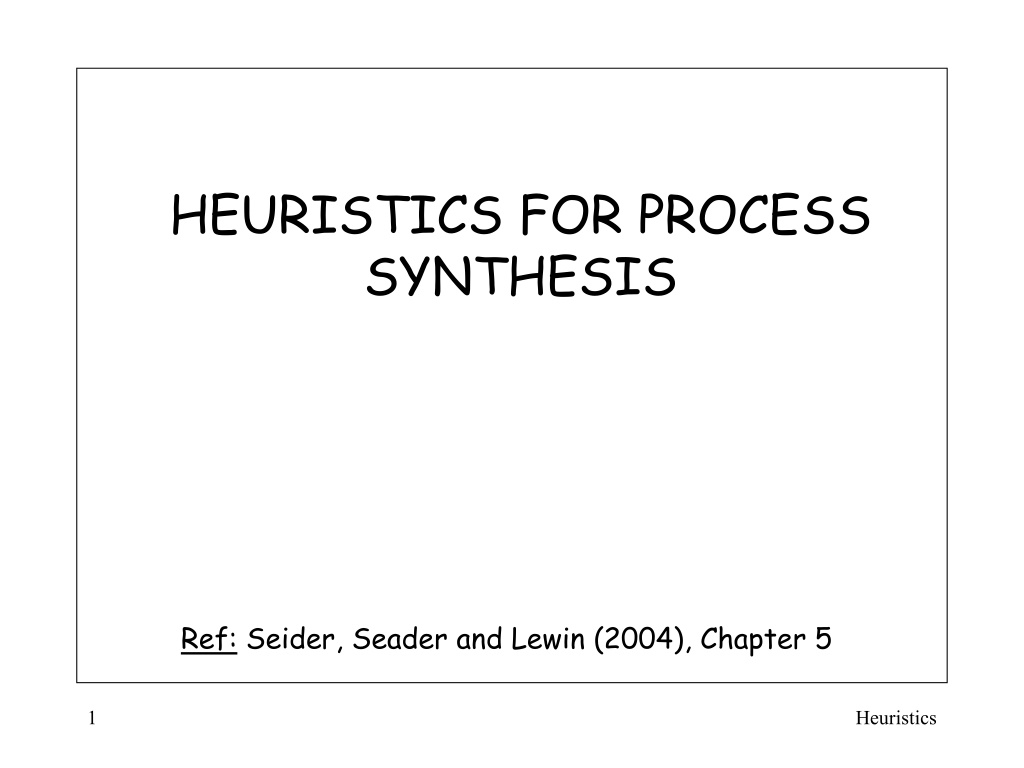





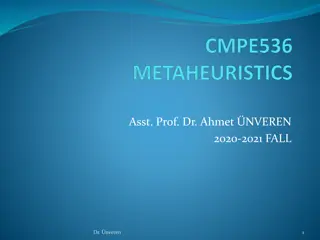
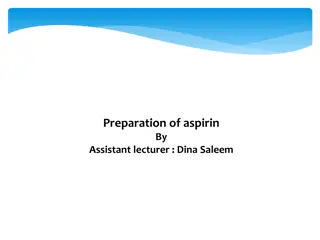
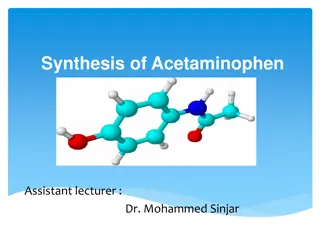


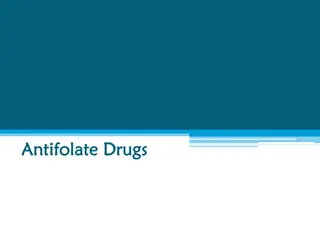
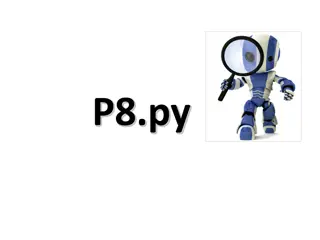
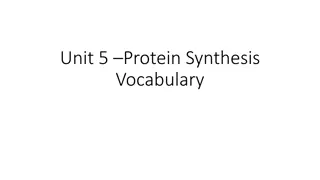





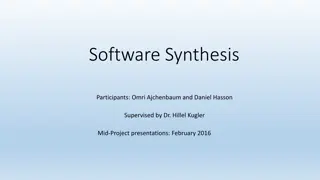
![The Synthesis of Cedranoid Sesquiterpenes via Photo-Rearrangement of Bicyclo[2.2.2] Octenones](/thumb/198279/the-synthesis-of-cedranoid-sesquiterpenes-via-photo-rearrangement-of-bicyclo-2-2-2-octenones.jpg)
